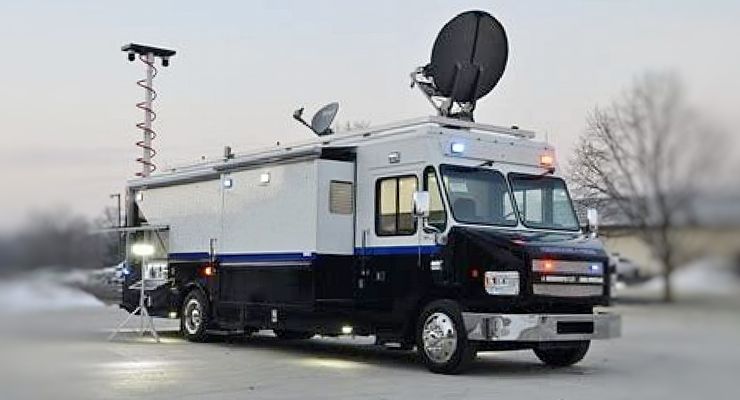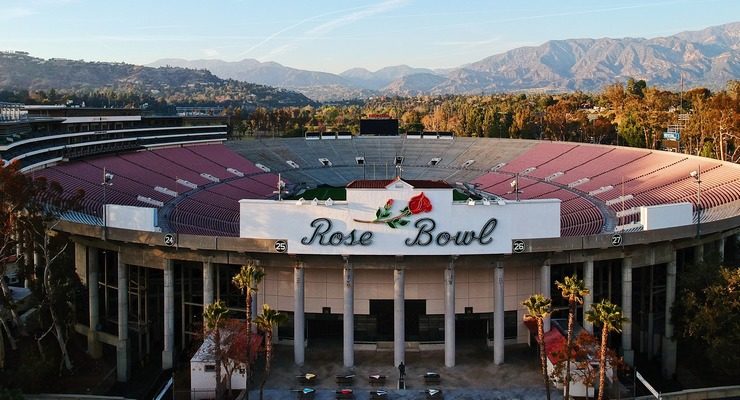The Pasadena City Council on Monday approved the purchase of a $1.8 million Mobile Command Center truck that will replace the department’s obsolete command vehicle that’s been in service for more than 20 years.
Local critics opposed the expenditure, claiming the vehicle will be used to conduct survellaince.
“The appearance of such a unit which only communicates with (equally fund draining) helicopters increases doubt that the primary purpose is not surveillance or specific neighborhood control,” wrote Ferne Hayes, who lives in Council District 7.
Police Chief John Perez said the unit is designed to operate as a mobile police station. Last week, the 911 system went down in several cities across the region, leading to fears that the city’s system had been hacked.
Hackers have twice successfully hacked the Azusa police department, including a hack of the 911 system in 2018.
The mobile unit would allow the department to maintain communications.
“This is a portable police station for the city.” Perez said.”It’s made to be an operation center.”
The recently purchased vehicle will have newer technology to maximize efficiency, functionality and officer safety, and can serve and support all city departments and agencies.
The new MCC truck will also contain an actual dispatch center and have better connectivity and better video downlink capabilities from the police helicopter camera and other aerial platforms, including drones, a preliminary report by the Police Department showed.
According to the report, the new MCC vehicle is envisioned to be so equipped that it would be able to provide a wide range of services so that the Police Department can be ready 24/7 to respond to critical incidents, public safety emergencies and civil unrest.
The new truck can also be deployed from 20 to 24 times per month, as opposed to the current vehicle’s record of up to 12 deployments per month, the report showed.
Deployments may include command post operations for events like the Rose Parade, the Rose Bowl Game, other events at the stadium, car shows, Coffee-With-A-Cop community engagement events, neighborhood meetings, vaccination site support, sustained crime scene investigations, and mutual aid situations.
According to staff reports, the current vehicle is unreliable and has serious maintenance issues. Repair parts are becoming unavailable, and it contains no mobile technology, computer, telephone or dispatch equipment.
When a new MCC is acquired, the old vehicle can be repurposed for use as a mobile library by the city, the report said.
Perez told Pasadena Now emphatically that the vehicle is not an armored or Bearcat vehicle.
The city previously used a Bearcat vehicle in 2014 during a mass shooting on Summit Avenue when John Izael Smith, 44, began firing a semi-automatic rifle after a dispute with his landlord.
Maria Teresa Aguiar, 59, Luis Fernando, 92, and Joseph Uribe, 31, a Good Samaritan who ran toward the gunfire in an effort to help, were killed by the gunfire. Three other people suffered non-life-threatening wounds in the incident.
Police recovered a semi-automatic weapon and two handguns at the scene. Smith had more than 90 rounds of ammunition in his home.
A Pasadena police officer arriving on the scene attempted to help Aguiar but was pinned down by gunfire.
The shooting ended after Smith called Pasadena police dispatchers, who were able to convince him to surrender to officers.
The Bearcat vehicle was used to allow officers to reach the victims.
Smith was charged with three counts of murder with the special circumstance of multiple murders and the special allegation that he personally and intentionally discharged a rifle. He also was charged with three counts of attempted murder, including the attempted murder of a police officer.
The unit was also used in 2009 during a shooting on El Molino Avenue.
In 2014, the department returned a Mine-Resistant Ambush Protected (MRAP), an armored personnel carrier vehicle, after the Pasadena Weekly reported police had acquired two of the vehicles.
The city obtained the MRAP vehicle through the U.S. Department of Defense’s Excess Property Program, also known as Program 1033, which allows police departments to obtain military equipment.
The program came under fire after the riots in Ferguson, Missouri in 2014 which were sparked by the officer-involved shooting death of unarmed teenager Michael Brown. During the riots, Ferguson police responded by using MRAPs and military grade weapons against protesters.
President Barack Obama established limitations on the program, but those limitations were rolled back by President Donald Trump in 2017.
At that time, the City Council knew the department had one vehicle and began to ask questions about the second one after the Weekly story appeared. After council members saw the second vehicle, the police department was told to return it.
“The MRAP was a bad idea,” Perez told Pasadena.


















